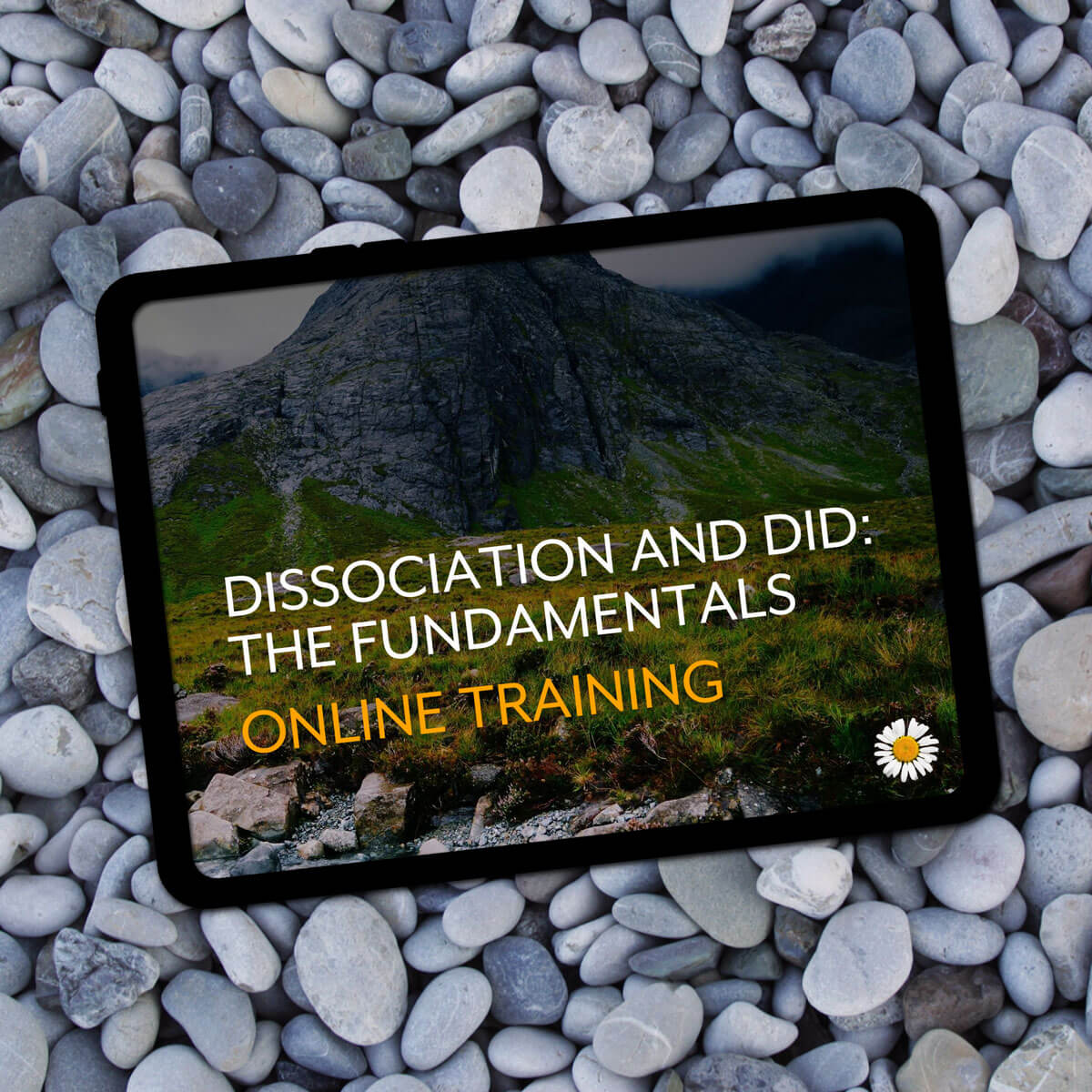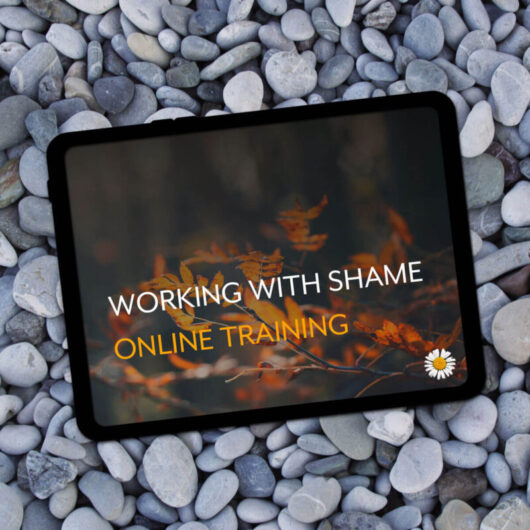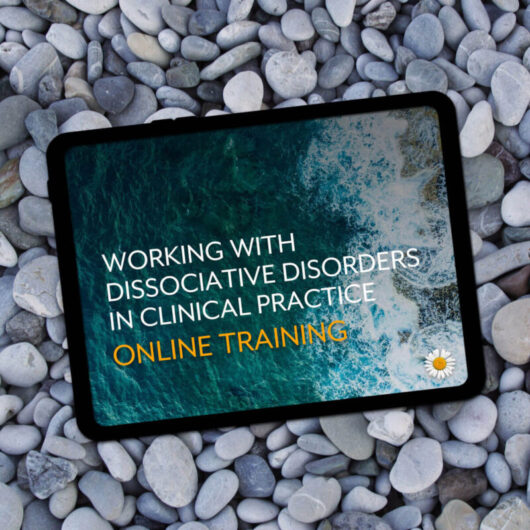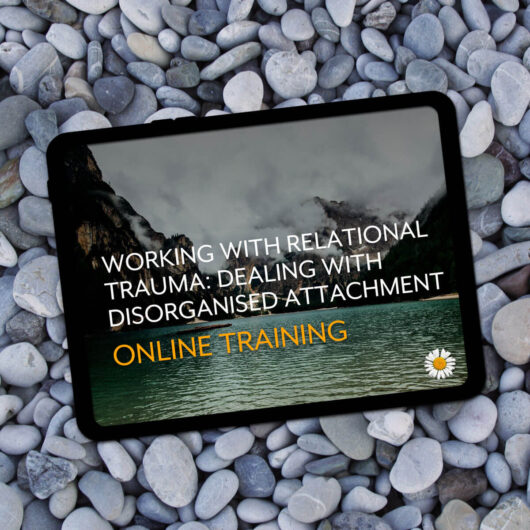When faced with overwhelming trauma, dissociation can be the only logical thing our brains are able do to help us to survive.
Join me as I explore what happens in the brain during trauma, why dissociation is the brain’s best way of surviving when overwhelmed by life-threat, how dissociative disorders develop and how best to support trauma survivors rediscover a sense of safety with a dysregulated nervous system.
“As always, empowering the professional, the survivor and anyone else supporting. Consistently well-researched and well-presented training that is concise, clear and above all, hopeful. I’ve lost track of the number of colleagues I have told to do ANY training, but preferably ALL training with Carolyn. It is accessible but thorough and insightful. It’s like really good supervision in a training course. Thank you again, Carolyn. I now have some more online courses to do and look forward to the new one coming soon.”
“This is an excellent course, clearly presented with lots of supporting documents and resources. I have learnt a lot from Carolyn and am sure that I will be dipping into the material on many occasions as Carolyn’s descriptions of dissociation and the ways that she recommends for counsellors to work have already been very well received by my clients.”
“Clearly and sympathetically presented, with a lot of information that would be helpful to any therapist encountering a client with DID. It helps dispel myths and misconceptions about the condition, explains everything you would need from start to finish, along with excellent handouts and plenty of direction for further reading.”
“As a trauma survivor, I am still at the relative beginning of my journey. I was unaware until two years ago when I had a massive breakdown that caused me to suffer from PTSD. I was recommended to Carolyn’s website by my NHS therapist when my ‘20 sessions’ were up. I have learnt so much from your training and recommend it to my professionals so they can support me in the best way possible. Thank you for sharing to help others understand.”
“As always, this training is of incredible value. I have not had a personal experience of a client with DID and it has really helped me to build a compassionate, kind, non-judgemental understanding of this survival strategy. I am now confident that if I experience a client with DID, I will know how best I can help them. The training structure on the website is incredibly easy to use, I thought the length was good as there is no rushing, the aura is very calm and considered.”
“Found this training fantastic. Clear, well presented, well researched. Particularly useful insights and thoughts from someone who has experienced DID first-hand. A real ability to relay sometimes complex concepts with clarity, compassion, and thought.”
“I thought it was very informative and explained DID extremely well.
“I enjoyed learning about DID as it was an area that I did not know much about. As always, Carolyn’s approach to very difficult psychological issues helps me to
“I thought the course was amazing, I found it really interesting and it allowed me to think about past and present clients, how this may link to them, and how I can work with them in the future.”
“Very helpful. DID is complex but Carolyn has a wonderful way of simplifying, clarifying and clearly explaining it in a way that makes total sense. I hope I can emulate this for my clients!”
“What a well put together training course – professional, easy to follow, relevant, and a strong thread of humanity throughout. It is so useful to also have the extra reading resources and printout materials. I also found the questions for reflection at the end of each lesson helpful and engaging. Thank you Carolyn, I have learned so much.”
“I loved everything about how this course was put together and delivered. Rich in content but easy to follow and absorb. Many thanks.”
“Complex knowledge explained simply. Information that is hard to find elsewhere. It is based on both research and lived experience.”
“Informative, real, honest, clear – in a way that is able to be understood by all. This course has helped me to become a fuller, more enriched therapist. But more importantly it has helped my client to be seen, heard and understood as a person, not as a diagnosis or ‘the problem’, as they have been in the past.”
- Available instantly upon purchase
- No set schedule – work at your own pace
- 6 hours of CPD with certificate upon completion
- Downloadable resources and additional reading for a comprehensive learning experience including:
- Course Notebook (with space for notes, reflection questions, session summaries, references and links)
- PowerPoint handouts (two versions, one with space for notes, one for easy printing)
- Set of psychoeducational posters (full-colour and low-ink versions)
- MP3 audio files
- Videos available to stream or also downloadable for offline viewing
- Lifetime access
- Start/stop and return as often as you like
- Easy to use: only needs a web browser and PDF reader
- Individual licence only: for multiple users and information about discounts for organisations, please click here.
I believe that recovery from trauma is possible. That’s not some kind of rah-rah empty statement intended to inspire and draw to a cheer whilst lacking substance. It’s a simple statement of fact based on the logic of how trauma impacts the brain.
By divorcing the symptoms of trauma – what we often refer to as mental illness – from the trauma itself, and from the brain and body’s evolutionary survival instincts, we create a narrative of hopelessness and powerlessness: I’m too messed up to heal. My symptoms are too bad. I’m too crazy.
For sure, trauma has devastating impacts. I’ve lived and still live those impacts myself. But the main reason we become stuck with those impacts is because we haven’t understood the basic neurobiology of trauma, and we’ve tried to fix the symptoms on their own, rather than the cause. It would be like trying to deal with an infectious disease outbreak (pandemic, anyone?) without a basic understanding of germ theory.
This course shows that there is nothing crazy or even ‘mentally ill’ about the traumatised brain. ALL of our symptoms make perfect sense in light of our evolutionary response to life-threat. And if they make perfect sense, and we can understand them, then we can also work with our brains and bodies to heal from the symptoms of trauma. That’s the hope for recovery right here.
On this course I look at the trauma narrative of my own life expounded through the lens of neuroscience and clinical theory. I cover topics such as:
- The trauma traffic light – polyvagal theory made simple, and in a way that makes a difference to a trauma survivor’s life as soon as we grasp it.
- The window of tolerance, and how to develop strategies to bring ourselves back into it when we are triggered outside of it.
- Why in helping someone it’s absolutely crucial that you are able to stay in the ‘green zone’ yourself – and why safety is the ultimate antidote to the unsafety of traumatisation.
- Why it’s ‘dissociation’ not ‘disassociation’!
- How dissociation is a survival strategy based upon a denial of reality, when reality is too painful to bear.
- How dissociative identity disorder (DID) solves a paradox, of knowing about the trauma to protect ourselves from it, and not knowing about the trauma so that we can get on with everyday life.
- How, why and when dissociation may develop into the way of processing information that we refer to as ‘dissociative identity disorder’.
- How depersonalisation and derealisation are the brain’s attempts to manage overwhelming distress by switching off the limbic brain.
This is a course designed not just for counsellors and psychotherapists but for anyone working with or coming alongside trauma survivors. It’s also aimed specifically at trauma survivors themselves, providing a wealth of psychoeducational material that aims to reduce shame by making sense of our way of interpreting and responding to the world. (Spoiler alert: we’re neither bad nor mad!)
This course looks at the neurobiological fundamentals of our trauma response. Dissociation happens to everyone, in varying degrees, whenever there is trauma, and so this course is relevant to everyone. It is not a basic course, but a deep dive into the way that our symptoms of trauma are our best attempt to survive and how and why we get stuck with them – and what to do about it.
SESSION SUMMARY
Session 1 – Introduction
- Exploring the phenomenological experience of living with dissociation and dissociative identity disorder
- Exploring different ways of framing dissociative experiences, e.g. as mental collapse or mental survival
- Exploring concepts from interpersonal neurobiology and our need for social support in processing traumatic experiences
- Exploring the experience and challenges of recovery from dissociative processing
- Understanding dissociation as a response to trauma, and dissociative disorders as an adaptation to chronic, persistent threat
- Exploring the concept of pathological dissociation as a chronic threat-based self-reinforcing feedback loop
Session 2 – Defining trauma and dissociation (1)
- Exploring the multiple meanings of dissociation and the linguistic origins and distinctions between ‘dissociation’ and ‘disassociation’
- Exploring different ways of viewing dissociation: neurobiologically, diagnostically and phenomenological
- Understanding trauma as eliciting a specific neurobiological response involving powerlessness (‘freeze’) rather than simply ‘extreme distress’
- Exploring the long-term neurobiological shifts caused by trauma
Session 3 – Defining trauma and dissociation (2)
- Exploring the role of active defences in mitigating long-term traumatisation
- Exploring what happens in the brain at the moment of trauma
- Exploring the trauma traffic light (polyvagal theory)
- Exploring the peri-traumatic of fight-flight-freeze
- Exploring the freeze response as correlative to dissociation
- Exploring the nature and survival role of dissociation
Session 4 – What is it like to be dissociative?
- Exploring via narrative the experience of dissociation and dissociated identities as they may present in the therapy room, including:
- trauma reenactments
- challenges for the professional/supporter
- attempted repression of parts
- the role of self-abuse in perpetuating dissociation
- and the role of co-consciousness.
- Introducing the theory of structural dissociation by exploring the distinction between ‘apparently normal personalities’ and ‘emotional personalities’
Session 5 – When dissociation persists: dissociative disorders
- Exploring how peri-traumatic dissociation persists and develops into a dissociative disorder
- Exploring the distinction between PTSD and DID in terms of secondary and tertiary structural dissociation
- Exploring the distinction between simple and complex PTSD
- Exploring the link between DID and disorganised attachment
- Exploring a spectrum of trauma responses as they map to psychiatric disorders
- Exploring the diagnosis of dissociative disorders via DSM-5 and ICD-11 criteria
- Introducing the partial DID diagnosis of OSDD (DDNOS), Dissociative Amnesia and Depersonalisation/Derealisation Disorder
Session 6 – Dissociation as a disorder or realisation
- Exploring the concept of multiplicity and the dangers of sensationalism
- Exploring the link between multiplicity and avoidance of knowledge of the trauma
- Understanding the development of dissociative parts of the personality in terms of survival advantage
- Understanding DID as solving a paradox between knowing and not knowing about the trauma, and the conflict between the demands of danger and daily life
- Exploring Jennifer Freyd’s betrayal theory and the work of the False Memory Syndrome Foundation.
- Understanding dissociation as a ‘disorder of realisation’
- Exploring inconsistency and paradox as a fundamental expression of the dissociative mind.
- Understanding dissociation as an affect-regulation mechanism
Session 7 – Where do you get help? (1)
- Exploring the pathways and avenues to getting help for dissociative experiences
- Understanding the necessity of safety in the genesis of healing
- Exploring the importance of mindset and identity in the pursuit of healing
- Exploring the role of powerlessness as a trauma symptom and its impact on recovery
- Exploring roadblocks to recovery
- Introducing the concept of a phase-based approach to trauma treatment
- Exploring the idea of the need to develop alternative strategies for affect regulation other than dissociation
Session 8 – Where do you get help? (2)
- Exploring myths of ‘trauma treatment’
- Exploring reasons for the abandonment of recovery/help-seeking
- Understanding the importance of the equal need for challenge and validation
- Introducing the ISSTD Treatment Guidelines for DID
- Exploring the relative dearth of treatment options via NHS and statutory services
- Exploring non-statutory alternatives to treatment
- Exploring the validity and value of a diagnosis
- Exploring routes to a diagnosis and the role of screening
Session 9 – How do you help a dissociative survivor?
- Exploring how to support a person with a dissociative disorder
- Exploring the importance of breaking stigma and shame through acceptance
- Exploring the importance of the supporting person being able to stay emotionally regulated
- Introducing the concept of the window of tolerance and the trauma traffic light
- Exploring how to decrease or increase physiological arousal levels
- Explaining the fundamental distinction between the ‘front brain’ and ‘back brain’
- Understanding how to work within a window of tolerance and assess the trauma traffic light state of the dissociative survivor and respond accordingly
- Understanding the importance of remaining in the green zone
- Understanding the genesis and impact of secondary traumatisation and how to mitigate it
- Exploring the role of supervision for helpers
- Exploring the importance of balanced exposure
Session 10 – Dealing with parts
- Further exploring how to help a dissociative survivor
- Exploring whether switching to other parts of the personality is a problem, and if so for whom
- Exploring different approaches to the presentation of traumatised parts of the personality, ranging from the sociocognitive model to the extremes of reification
- How to manage triggered states
- How to use the trauma traffic light model to re-regulate
- How to manage traumatic disclosures



